Fairey Rotodyne Model
Production Time 9 to 10 weeks
Shipment is by FedEx, UPS or DHL International Express Courier with a normal door-to-door delivery time worldwide of within 2-3 business days after dispatch. Due to the current volatility of world fuel prices, the amount mentioned here is our best estimate for DHL and UPS and may be subject to change at the time of shipping.

Model Description: Fairey Rotodyne Model Wood Replica Scale Custom Helicopters
Manufacturer: Fairey
Rotor Diameter: 24.6 Inches (62.5 Centimeters)
Height: 6.1 Inches (15.5 Centimeters)
Scale: 1:44
Registration: XE521
$249.50
Production Time 9 to 10 weeks
-
United States dollar ($)
-
Pound sterling (£)
-
Euro (€)
-
Australian dollar ($)
-
Canadian dollar ($)
-
Singapore dollar ($)
-
Swiss franc (CHF)
-
Japanese yen (¥)
-
Danish krone (kr.)
-
Hong Kong dollar ($)
-
Norwegian krone (kr)
-
Swedish krona (kr)
-
United Arab Emirates dirham (د.إ)
General Product Description
Our PlaneArts Fairey Rotodyne Model model exhibits unique, unrivaled quality and detailed design to come as close as possible to the accuracy of the actual aircraft. It comes as standard with a robust, durable base or stand which is available in a variety of different finishes designed to match your own personal requirements including solid wood, wood with polished metal supports or adjustable wood wall mount and will be ready within about 9-10 weeks from placement of order.
The Fairey Rotodyne Model model is made of the finest kiln dried renewable mahogany wood (commonly known as Lauan or Meranti) which has undergone many stages of carving and meticulous and careful sanding giving the beautiful, finished museum quality masterpiece. Many collectors and model connoisseurs demonstrate their preference for genuine handmade and hand painted mahogany wood models rather than plastic or die cast (diecast) alternatives due to the overall look and totally different feel of the item - we trust you will find the same. We can however, if required produce the same model in Solid Cast Resin so just click and contact us for further information. Our craftsmen and gifted artisans ensure that our finely handcrafted model airplanes match the precise blueprint details of the original aircraft. The paint scheme, markings and parts are closely matched, reflecting the original aircraft. This stylish top-quality desktop replica model will surely enthrall anyone who receives this as a gift and for sure one of the most appropriate and desirably collectable gifts for any aviation enthusiast and avid helicopter model collector whilst also displaying a perfect resemblance to the actual real life heli.
If you require, we can also make the Fairey Rotodyne Model model in any other airline, private livery or colour scheme you require and if necessary, in a different size or scale. Just click here to contact us with a description or photographs of what you require, and we will let you have a quotation for the necessary customization by return email. We can also make bespoke scale replicas of any other private / civil commercial airliner or airliners, helicopter, glider, gliders with engines, military jet, warplane jets, propeller warplanes, biplane, triplane, tail fin, spacecraft, rocket or NASA model you require in any airline, military or civilian livery or colors. We also produce model airships, blimp, dirigible, blimps, boat and ship collectibles. Wall plaque or seal for military, government or private customers. Again, by clicking here to contact us just let us know exactly what you need.
The Fairey Rotodyne: An Innovative Blend of Helicopter and Airplane Technology
The Fairey Rotodyne represents a unique chapter in aviation history, a hybrid aircraft that promised the versatility of a helicopter with the speed and range of a conventional airplane. Developed in the late 1950s by the British company Fairey Aviation, the Rotodyne was designed as a “compound helicopter” aimed at revolutionizing short-haul travel. Despite its short-lived career, the Rotodyne’s innovative design and capabilities offer valuable insights into the potential of vertical takeoff and landing (VTOL) aircraft.
Features of the Fairey Rotodyne:
The Fairey Rotodyne was distinctive in its design and functionality, characterized by several key features:
- Compound Helicopter Design: The Rotodyne featured a large rotor for vertical takeoff and landing, which was driven by tip jets located at the rotor blades’ ends. This eliminated the need for a tail rotor, typically used in helicopters to counteract the torque effect of the main rotor.
- Tip Jet Propulsion: Unlike traditional helicopters, the Rotodyne used compressed air, expelled through nozzles at the rotor tips, which was heated by fuel combustion to drive the rotor during takeoff and landing. Once airborne, the rotor would autorotate like an autogyro, with thrust provided by conventional propeller engines.
- Hybrid Flight Mode: For horizontal flight, the Rotodyne utilized two Napier Eland turboprop engines mounted on the fuselage, providing forward thrust and allowing the aircraft to reach speeds comparable to fixed-wing aircraft.
- Capacity and Comfort: With a capacity to seat up to 48 passengers, the Rotodyne was designed for comfort and efficiency in city-to-city transport, embodying the amenities typical of larger, more conventional aircraft.
Advantages of the Fairey Rotodyne:
The Rotodyne offered several advantages over both helicopters and fixed-wing airplanes:
- Versatility in Landing and Takeoff: The VTOL capabilities allowed the Rotodyne to operate in urban areas and remote locations without the need for long runways, opening possibilities for new air routes and services.
- Speed and Range: The aircraft’s ability to transition to forward flight with turboprop engines enabled higher speeds and greater range compared to traditional helicopters, making it ideal for short to medium-haul flights.
- Reduced Infrastructure Need: The VTOL capability meant that extensive airport infrastructure was not necessary, which could reduce costs and logistical constraints for air travel.
- Noise Reduction: Although the tip jets were loud during takeoff and landing, the Rotodyne was designed to switch to quieter turboprop engines in flight, reducing noise pollution over longer distances.
Benefits and Impact:
The Fairey Rotodyne promised several benefits that could have significantly impacted air travel:
- Enhanced Urban Mobility: The aircraft’s ability to use small landing pads and rooftops could have transformed urban transportation, offering a practical solution to congestion and long surface commutes.
- Emergency and Rescue Operations: Its rapid deployment capability could be invaluable in disaster relief and emergency situations, where immediate access to affected areas is crucial.
- Innovation in Aircraft Design: The Rotodyne’s unique design pushed the boundaries of VTOL technology, contributing valuable lessons to future developments in hybrid aircraft.
Conclusion:
Despite its potential, the Fairey Rotodyne was ultimately shelved in 1962 due to concerns over operational costs, noise levels during takeoff and landing, and a lack of commercial interest. However, the innovative concepts introduced by the Rotodyne continue to influence modern VTOL designs, highlighting its enduring legacy in the field of aviation technology. As urban air mobility becomes a reality with advances in technology, the pioneering spirit of the Fairey Rotodyne serves as an inspiring reminder of the endless possibilities in aircraft design.
| Weight | 4 kg |
|---|---|
| Dimensions | 16 × 24.6 × 6.1 in |

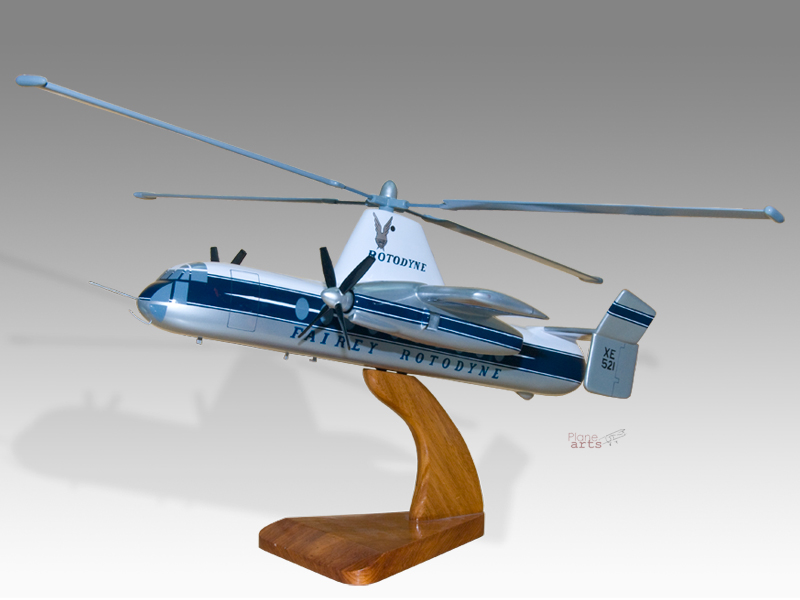
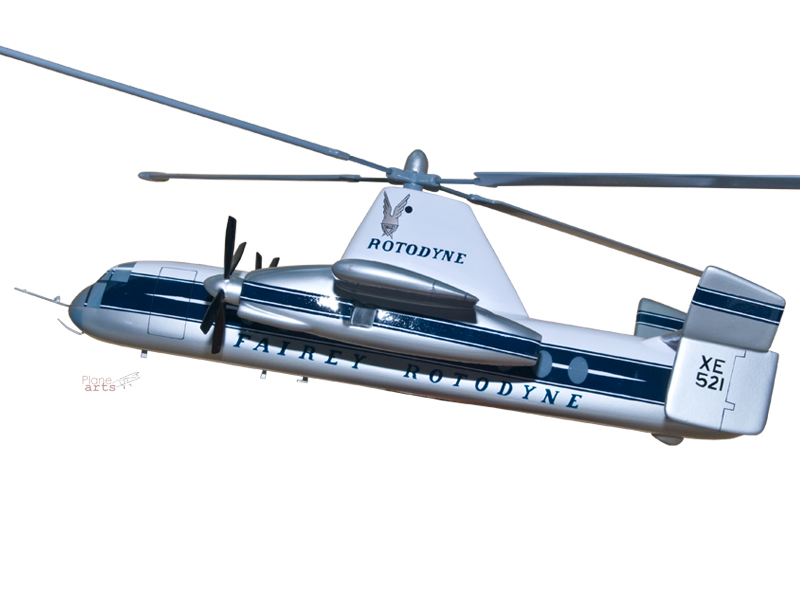
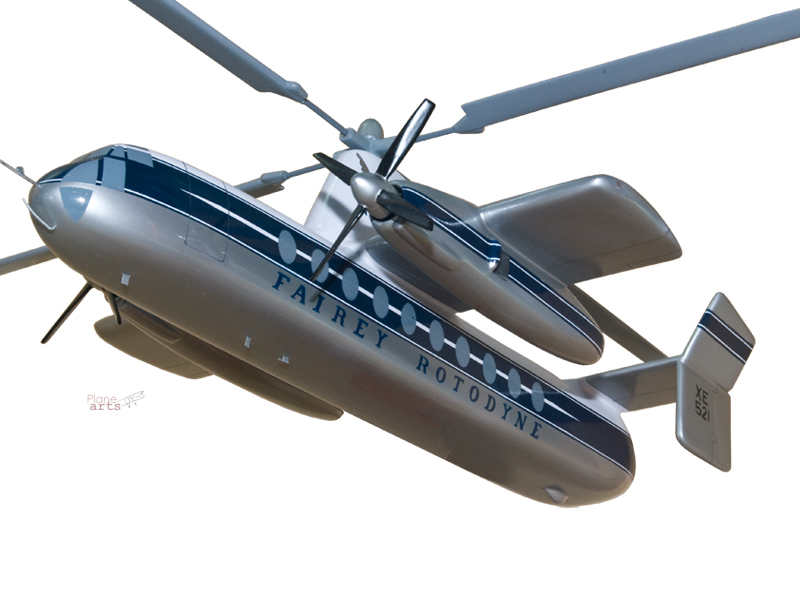
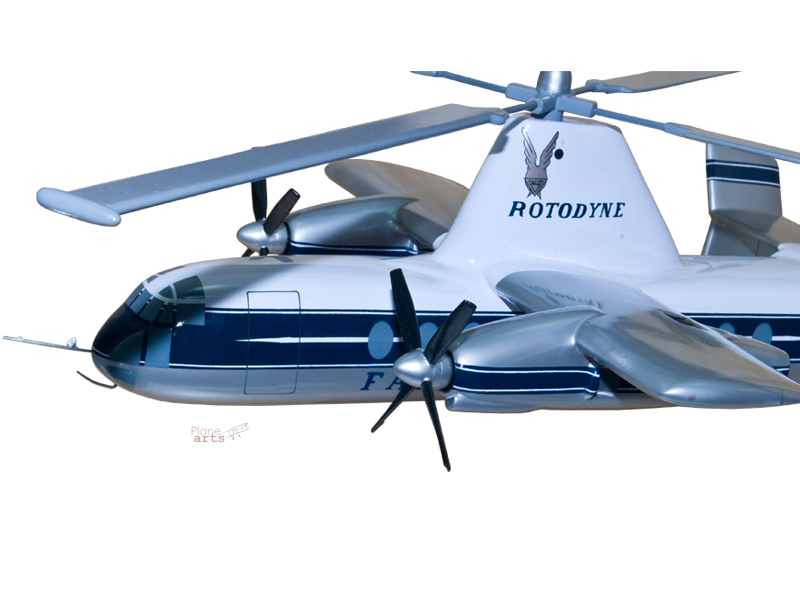
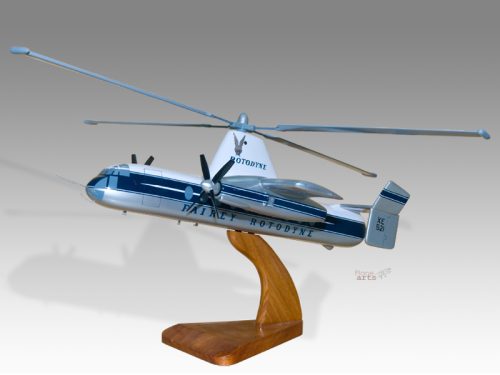
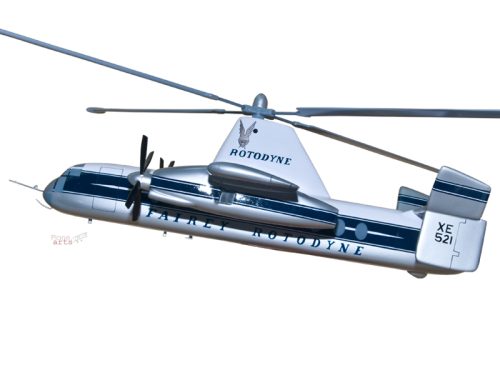
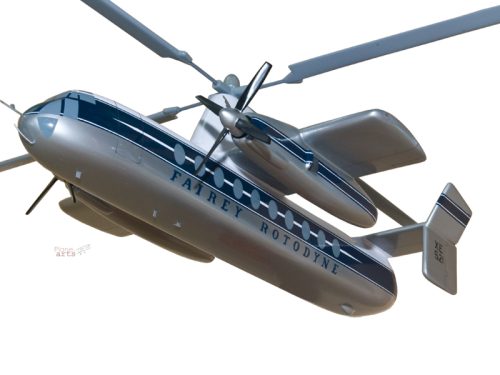
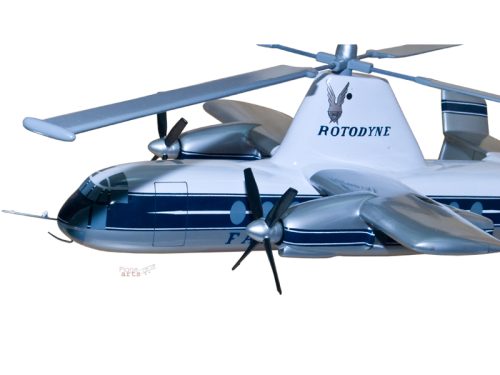
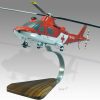

Reviews
There are no reviews yet.